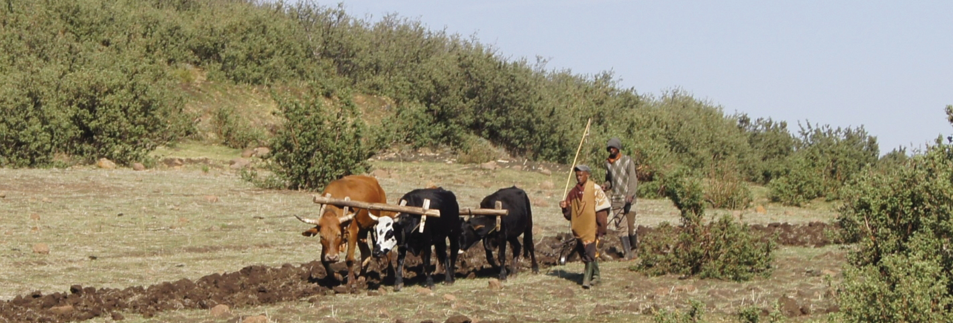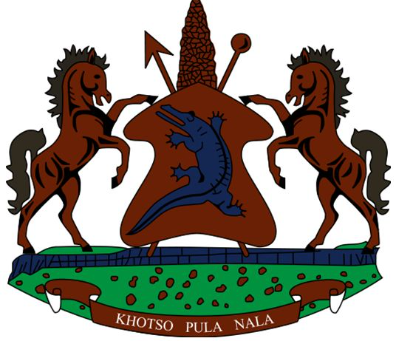… To protect farmers against natural disasters
The Smallholder Agriculture Development Project II (SADP II) is currently in the process of implementing smart input subsidies and agricultural insurance within the nation.
This effort is consistent with sub-component 2.4, which focuses on promoting smart subsidies and agricultural insurance for agricultural investment. The Government of Lesotho is undertaking the implementation of SADP II with financial backing from the World Bank, the Government of Japan, and the International Fund for Agricultural Development (FAD).
According to reports from the Food and Agriculture Organisation (FAO), the increasing frequency and intensity of natural disasters, such as storms, floods, droughts, and wildfires, have led to significant damage in the agricultural sector, thereby contributing to a rise in economic losses.
These escalating disaster-related losses highlight the urgent need for effective risk management strategies, particularly within agricultural systems.
As a result, agricultural insurance and input subsidy programs are advocated as mechanisms that can provide essential financial support to farmers, enabling them to manage risks more effectively and enhance productivity.
Communications Specialist Malefetsane Raliengoane has indicated that SADP II has secured additional financing from the Global Agriculture and Food Security Programme, under the oversight of the IFAD, to facilitate the execution of this initiative.
In particular, the agricultural insurance pilot project will commence in Lesotho with a focus on crop insurance at this stage. Nancy Chawawa, a Resilient Specialist consultant from the United Nations World Food Programme (WFP), clarified that this insurance is procured by agricultural producers and subsidised by the national government to mitigate losses resulting from natural disasters affecting their crops.
These Chawawa indicated at the implementation strategy meeting held at Avani Maseru on Tuesday. The meeting was attended the Ministry of Agriculture, Food Security and Nutrition district heads, WFP representatives and other relevant stakeholders amongst others.
Chawawa said: “Agriculture insurance is important for farmers. It helps them deal with unpredictable challenges, especially with more extreme weather and climate change. Insurance provides a safety net against financial losses, promoting stability and growth in agriculture.
“Having insurance can also help farmers secure loans. Lenders prefer to support farmers with coverage, allowing them to expand their operations and invest in new technology that improves productivity and sustainability,” she continued.
“To maximise the benefits of agriculture insurance, we need to increase awareness among farmers and agricultural businesses. This means working with local partners to improve understanding of sustainable practices in climate and agriculture insurance. By combining insurance with other useful services in the agricultural value chain, we can make it more appealing and accessible, helping farmers succeed in a changing environment.”
The pilot program for the combined purchase of subsidised insurance and agricultural inputs is scheduled to operate for one year, after which an evaluation will be conducted to determine its applicability for the broader farming community.
The index-based agricultural insurance tools to be utilised for assessing risk factors include the Area Yield Index, Weather Index (estimates rainfall deficit), and Indemnity Insurance, which is a traditional form of coverage for inputs or yields.
Chawawa elucidated that the insurance coverage will be designed to be more accessible to commercial farmers, with a specific emphasis on cereal crops cultivated in open field environments.
Additionally, considerations regarding soil type and field size will be incorporated into the insurance coverage criteria.
According to Khauta Faku, an Information Technology officer at the World Food Programme (WFP), selected farmers participating in the pilot project will procure and pay for subsidised inputs and premiums through an electronic voucher system, utilising existing commercial payment platforms such as M-Pesa, EcoCash, and C-Pay.
“Payments will be made at designated agro-dealers, who will subsequently reconcile their database with the respective insurance companies. Furthermore, the government and WFP will process disaster claims for farmers through the database provided by the insurance entities,” he explained.
Faku emphasised the importance of educating participating farmers about the system to ensure they are capable of securing their crops effectively. He also noted that agro-dealers should be strategically located near farming communities to facilitate easier access to necessary inputs, which must also meet quality standards.
Amongst the African countries to introduce agriculture insurance is Kenya in March 2016 to protect farmers from natural disasters. The program is subsidised by the government and targets smallholder farmers. The premium rate depends on the type of crop and the number of insured perils.
Summary
- According to reports from the Food and Agriculture Organisation (FAO), the increasing frequency and intensity of natural disasters, such as storms, floods, droughts, and wildfires, have led to significant damage in the agricultural sector, thereby contributing to a rise in economic losses.
- The pilot program for the combined purchase of subsidised insurance and agricultural inputs is scheduled to operate for one year, after which an evaluation will be conducted to determine its applicability for the broader farming community.
- According to Khauta Faku, an Information Technology officer at the World Food Programme (WFP), selected farmers participating in the pilot project will procure and pay for subsidised inputs and premiums through an electronic voucher system, utilising existing commercial payment platforms such as M-Pesa, EcoCash, and C-Pay.

Development Journalist specialising in the reporting of social, economic, and environmental issues. He analyses the impact of policies and programs on communities, along with other factors that influence community well-being. In addition to his journalism endeavors, he is an accomplished photojournalist, capturing compelling images that complement his narratives. Masoabi is also an audio storytelling podcaster, having earned certification from the Knight Centre for Journalism, affiliated with the University of Texas, United States.






